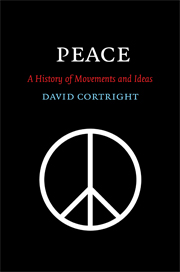6 - Confronting the cold war
Published online by Cambridge University Press: 05 June 2012
Summary
World War II taught pacifists and internationalists bitter lessons about attempting to secure peace in a broken world. No one could accept any longer the enlightenment dream that society was evolving naturally toward peace. Not after the collective madness of virtually the entire world at war, which left more than 50 million dead and ended with the dropping of the atomic bomb. Not with the subsequent rise of a cold war nuclear arms race that threatened to annihilate hundreds of millions and perhaps extinguish life itself. The bloody record of the twentieth century, wrote Jonathan Schell, showed that violence “was capable of fantastic mutation and expansion,” as if “an evil god had turned human society into an infernal laboratory to explore the utmost extremes of violence.”
Albert Camus diagnosed the dilemma of the age in his essay “Neither Victims nor Executioners.” The horrors of world war “killed something in us,” shattering our self-confidence. The quest for utopias and the doctrine of ends justifying means had led to mass murder. The challenge for the future was to develop more modest political aims, “free of messianism and disencumbered of nostalgia for an earthly paradise” – to seek a world in which murder would no longer be legitimized, where the resort to violent means could be tamed. To prevent annihilation, he wrote, we must pursue international democracy.
- Type
- Chapter
- Information
- PeaceA History of Movements and Ideas, pp. 109 - 125Publisher: Cambridge University PressPrint publication year: 2008

